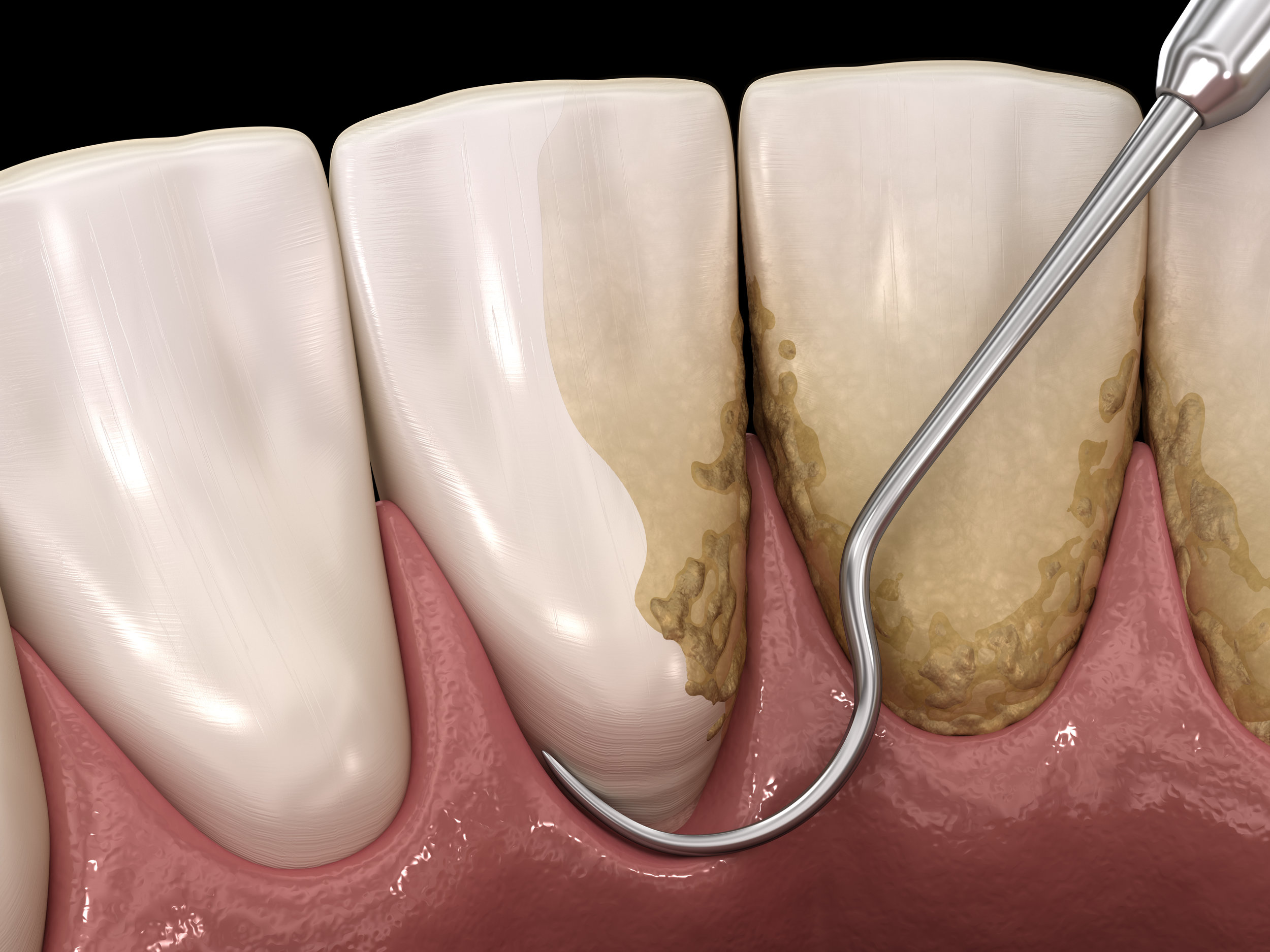Endoscopy for Scaling & Root Planing
These illustrations show dental instruments removing plaque and calculus under the gum.
The initial stage of treatment for periodontal disease may be a deep cleaning, or scaling and root planing. The objective of this non-surgical procedure is to remove etiologic agents such as dental plaque and tartar, or calculus, which causes gingival inflammation and disease. Scaling and root planing can be used as a stand-alone treatment, or a preventive measure. It is commonly performed on cases of gingivitis and moderate periodontal disease. Often times, our hygienists and periodontists will use an endoscope to aid them in the visualization and removal of calculus (tartar) from the teeth.
What do the procedures entail?
We will only perform scaling and root planing after a thorough examination of the mouth. Depending on the condition of the gums, the amount of tartar present, amount of bone loss, and the progression of periodontitis, we may recommend scaling and root planing. In some cases, a local anesthesia may be used during the procedure, in some cases we use sedative medications and/or nitrous oxide (laughing gas).
Scaling:
When scaling is performed, calculus and plaque that attach to the tooth surfaces are removed. The process especially targets the area below the gum line. Scaling is performed with a special dental tool called an ultrasonic scaling tool (a.k.a. Cavitron or Piezo scaler) or with hand instruments.Root Planing:
Root planing is performed in order to remove bacteria, toxins and calculus. The root of the tooth is literally smoothed, which promotes healing, and also helps prevent bacteria from easily colonizing in the future.
After scaling and root planing your periodontal situation will be re-evaluated and any needed additional therapy discussed.
Benefits of Scaling and Root Planing
Scaling and planing has periodontal benefits. It is most successful in treating the early stages of gum disease. This therapy, along with good personal oral hygiene and regular maintenance care, can stop the progression of bone loss that results from periodontal disease.


